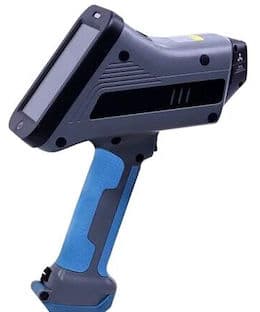
-----
Identification of stainless steels
I am an inspector for incoming raw materials for the company I work for. My question : Is there a chemical test to identity 17-4ph,440c,416 and 303 from each other. We are already using cupric sulphate to identify our steel raw materials from stainless steels. This chemical has no reaction on stainless steel.
Michael Benedetto- Westbury, New York, USA
2005
You can identify the various steels using X-ray fluorescence. It's a quick, non-destructive method that can be quite accurate. There are some pretty sophisticated systems costing upwards of $175,000, but the best units for your application will run you less than $30,000. You might check with the manufacturers if that's too high, as they sometimes have used units available for under $20,000. They're pretty easy to operate -- some years ago we had a portable unit that was commonly used in scrap yards.

Jim Treglio - scwineryreview.com
PVD Consultant & Wine Lover
San Diego, California
2005
You may be surprised sometime when you get a failure on 440c and
416 with he copper sulphate
⇦ on
eBay or
Amazon [affil link] test. You cannot use the copper sulphate test on these grades. See ASTM A967.
I agree with Jim that the X-Ray analysis devices are simple and excellent. They are a bit pricey yet.

Lee Kremer
Stellar Solutions, Inc.
McHenry, Illinois

2005
A whole lot cheaper than X-ray is the chemical spotting method for ID'ing metal alloys. Koslow Scientific Testing Instruments [a finishing.com supporting advertiser] sells such kits or you can google for "electrospot" method which this type of ID is known. The whole kit will probably run you less than $250!

Milt Stevenson, Jr.
Plating shop technical manager - Syracuse, New York
2005
Michael, if the 303 is in the annealed condition, a magnet is where you want to start. The 17-4, 440C, and 416 will all be attracted but the 303 will not stick to a magnet. (Work hardened, like half hard material will be somewhat attracted- that's why I noted the annealed condition as a caveat.) From there, you need more, and the Koslow or other test kits Milt suggested might work.
First test for nickel- the 17-4 has it, about 4%, the 440C and 416 don't. To distinguish between 440C and 416, the 416 has sulfur in significant amounts because it's free machining, while the 440C doesn't. Yet you'll first want to contact the maker of the test kit to confirm it can test for free machining levels (0.15%) of sulfur. The test kits aren't sufficiently accurate to pick up the difference in chromium level between 440C and 416.
Good luck!

Lee Gearhart
metallurgist - E. Aurora, New York
2005
Q, A, or Comment on THIS thread -or- Start a NEW Thread
